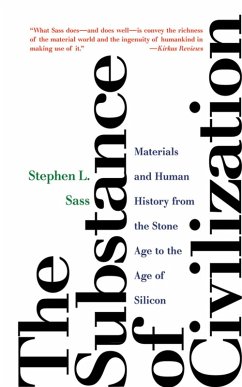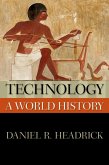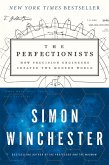The story of human civilization can be read most deeply in the materials we have found or created, used or abused. They have dictated how we build, eat, communicate, wage war, create art, travel, and worship. Some, such as stone, iron, and bronze, lend their names to the ages. Others, such as gold, silver, and diamond, contributed to the rise and fall of great empires. How would history have unfolded without glass, paper, steel, cement, or gunpowder?
The impulse to master the properties of our material world and to invent new substances has remained unchanged from the dawn of time; it has guided and shaped the course of history. Sass shows us how substances and civilizations have evolved together. In antiquity, iron was considered more precious than gold. The celluloid used in movie film had its origins in the search for a substitute for ivory billiard balls. The same clay used in the pottery of antiquity has its uses in today's computer chips.
Moving from the Stone Age to the Age of Silicon, from the days of prehistoric survival to the cutting edge of nanotechnology, this fascinating and accessible book connects the worlds of minerals and molecules to the sweep of human history, and shows what materials will dominate the century ahead.
The impulse to master the properties of our material world and to invent new substances has remained unchanged from the dawn of time; it has guided and shaped the course of history. Sass shows us how substances and civilizations have evolved together. In antiquity, iron was considered more precious than gold. The celluloid used in movie film had its origins in the search for a substitute for ivory billiard balls. The same clay used in the pottery of antiquity has its uses in today's computer chips.
Moving from the Stone Age to the Age of Silicon, from the days of prehistoric survival to the cutting edge of nanotechnology, this fascinating and accessible book connects the worlds of minerals and molecules to the sweep of human history, and shows what materials will dominate the century ahead.
Dieser Download kann aus rechtlichen Gründen nur mit Rechnungsadresse in A, B, BG, CY, CZ, D, DK, EW, E, FIN, F, GR, HR, H, I, LT, L, LR, M, NL, PL, P, R, S, SLO, SK ausgeliefert werden.









